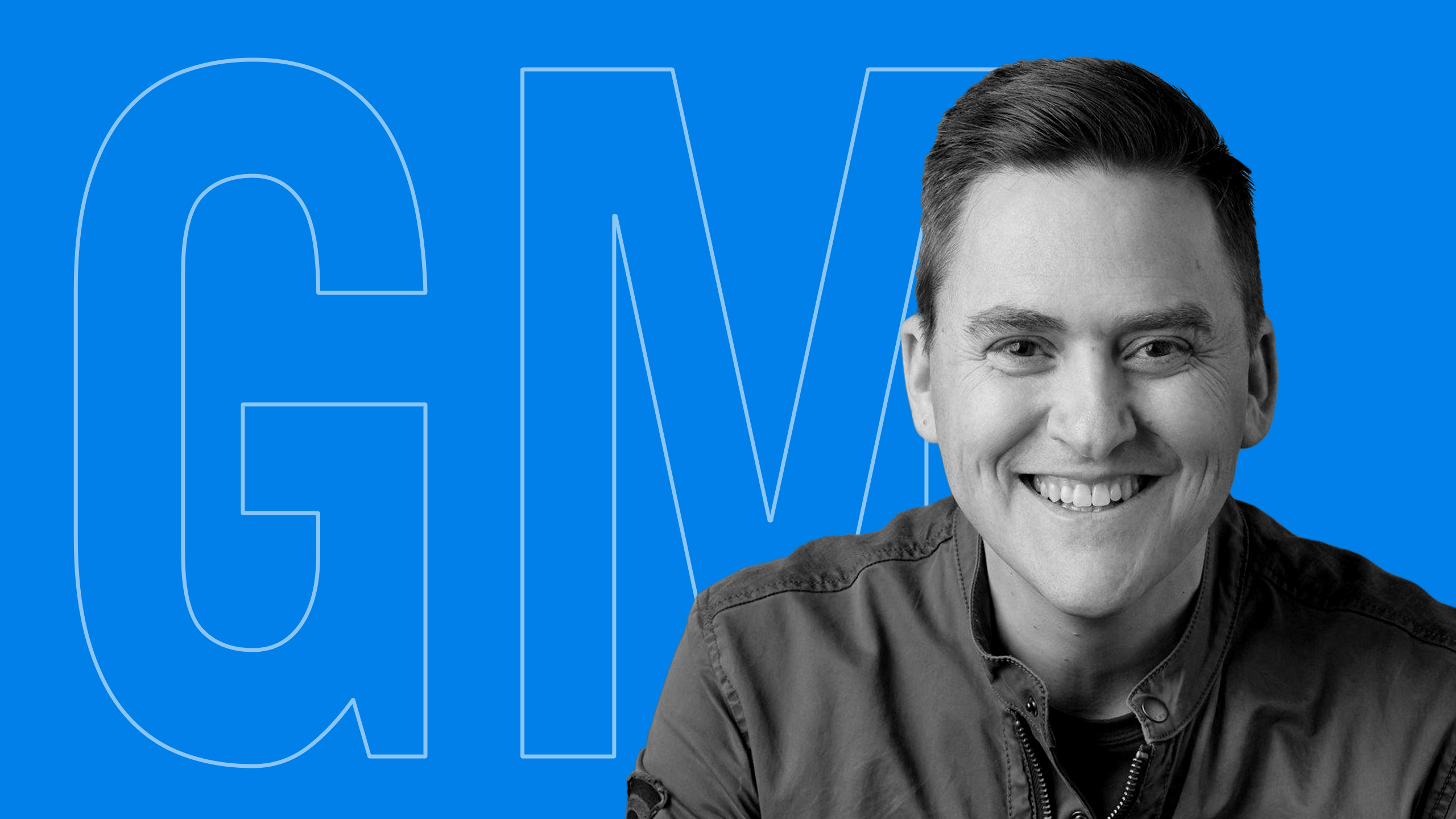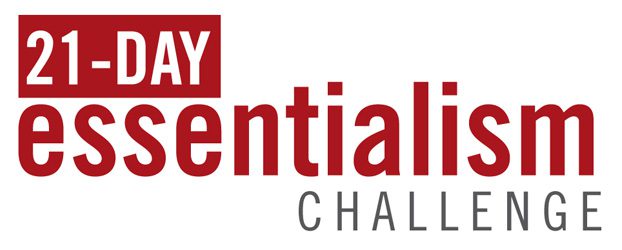Greg McKeown:
Welcome. I’m your host, Greg McKeown. I’m the author of two New York Times bestsellers, Effortless and Essentialism. And I am here with you, whether you’re the CEO or want to be the CEO of your own life, or want to learn how to be able to achieve our highest point of contribution together. Today, I will share a fascinating story, something counterintuitive I’ve learned, and some actionable advice, putting it into place. By the end of this episode, you will be able to accomplish more by doing less and accomplish more output with less spin. So let’s begin.
Remember to teach the ideas in this podcast to someone else within the next 24 to 48 hours of listening. That will help them. It will help you.
I am right now in Stockholm, Sweden doing a keynote for a series of senior executives, and I am about to go and see the Vasa. For those of you that have read Effortless, you remember perhaps the story of the Vasa, but I can’t be here and not talk about this experience because I’ve always wanted to actually see the ship behind this true story of the most important ship ever built in Sweden. It all started 400 years ago. Gustav, the second, who was the king of Sweden at the time, saw this vital need to upgrade his armada of ships. He’s trying to protect his people from all the growing Naval powers that surrounded them then, and his attention was drawn to building a giant military warship.
He found the shipbuilder and tasked him to build what became known as the Vasa. The project was of the utmost importance to King Gustav, so much so that he allocated a whole forest, you know, a thousand trees, to provide the lumber for the project. He opened the Royal coffers too. He assured Hybertsson that he would have an almost unlimited budget to complete this project successfully. But unfortunately, the king did not have a clear vision of what the final product would look like, or rather he kept changing his vision of what the final product would look like.
So at first, the ship was to be 108 feet long with 32 cannons on deck. But later, that changed to 120 feet, even though all of the lumber had already been cut for the original specifications. So that had to be redone completely, but no sooner had Henrick’s team made the necessary adjustments. Then the target shifted again. This time the king decided that the ship needed to be 135 feet long. The cannon requirements changed as well, instead of 32 cannons in a single row. He asked for 36 cannons in two rows, plus another 12 small cannons, 48 mortars, and 10 more smaller caliber weapons.
This tremendous effort was exerted by not just the shipbuilder but 400 other people to make it all happen. And even as they approached completion, the king changed his mind. Perhaps not surprisingly, again, asking for 64 large cannons instead. The stress of the news is said to have given Henrik a fatal heart attack. Still, the endless project continued. And this time under Henrik’s assistant Hein Jacobsson. Budgets continued to escalate.
The effort continued to expand, and the king continued changing the end goal in an utterly non-essential edition for a gunship. He even asked for some 700 ornate sculptures, which would take a team of expert sculptures more than two years to complete. And those were all to be attached to the sides, the ball walk, and the transom of the ship.
And so it was that on August 10th, 1628, the Vasa left the Stockholm port for its maiden voyage still unfinished and before it had been properly tested to ensure it would survive the conditions of the high seas. Meanwhile, the king had found the time to plan a celebration to commemorate the expedition. There were fireworks. There were foreign diplomats. There was pageantry, and as the ship sailed away, the gun ports were open and the guns pointing out so that they could fire a salute to the dignitaries on shore. Then suddenly, a gust of wind caught the sail of the ship, causing the massive vessel to tilt severely over to one side. As the cannons tipped into the sea, water entered through the gun ports.
Despite a strenuous all-out effort on the part of the crew, water almost instantly flooded into the gun deck and onto the hold, further destabilizing the ship. Tragically, it took just 50 minutes for the Vasa to completely sink, taking 53 crew members with it. They died less than three-quarters of a mile from the shore. And so, the most expensive Naval project in Sweden’s history sailed less than a mile before being buried in the sea. All because the king had made the project almost impossible to safely complete by constantly redefining what done looked like.
Now, if you want to make something hard for yourself, whether you’re the CEO or the CEO of your own life, all you have to do is make the end goal as vague as possible. That’s because you cannot, by definition, complete a project without a clearly defined endpoint. You can spin your wheels working on it. You can tinker with it. You can and likely will abandon it, but to get an important project done, it’s absolutely necessary.
And I know I’m being captain obvious to say it, but to define what done looks like, and if you do think it’s too obvious, just think of any essential project you are working on and ask yourself how clear you are on what completion looks like. As soon as you get clear about exactly what the end state needs to be, it’s like giving precise instructions to the extraordinarily advanced supercomputer of your brain. Everything starts working towards how to navigate you as quickly and directly as possible to that objective, to that end state.
So I want to teach you a one-minute actionable habit that will make a difference to every project and every task you do going forward. It’s one-minute clarity. So you have obviously many projects to do, essential projects that you want to complete, but often you’re going to find yourself spinning your wheels, unable to get the project over the line, making progress, but it isn’t completed.
Getting clear on what done looks like doesn’t just help you finish. It helps you get started too. All too often, we procrastinate or struggle to find the first steps on a project because we don’t have a clear finish line in mind. As soon as you define what done looks like, as I mentioned, you’re going to give your conscious and unconscious mind clear instructions, things, click into gear, and you can begin charting a course toward that end state. And my experience in coaching executives to do this is that it’s surprising how much clarity can be achieved in just a one-minute burst of concentration. For example, when you have an important project to deliver, take 60 seconds to close your eyes and actually visualize what it would look like to cross it off as done. Let’s say it’s something like I’ve addressed each of the questions the client posed and proofread it once.
It only takes one minute of concentration to clarify what done looks like. But as soon as you get to that precision answer, it cuts away all the fluff and all the overthinking and over-tinkering and exhausting work that slows down execution. Getting the outcome clear, focuses you like nothing else. All of your resources shift into gear to bring that outcome to fruition.
Let me give you specific contrasts. A vague goal. Okay. Lose weight. What done looks like. I look down at the weighing scale and see the number 177 staring back at me. A vague goal. Walk more. What done looks like. Reach 10,000 steps a day on my Fitbit for 14 days in a row. A vague goal would be to read more books. And what done looks like. On my digital book, read it. It will say finished next to War and Peace. A vague goal is to turn in the big report. And that sounds like a specific goal, but I’m talking about a higher level of precision than that. It might be type up 12 pages full of concrete examples and actionable advice, and be able to picture the customer saying it’s terrific.
A vague goal. Launch my product. What done looks like would be to have 10 beta users try the app for a week and give feedback. A vague goal would be complete the podcast episode. In this case, what done looks like is the podcast is recorded, and the file is uploaded.
Beyond applying this simple principle to projects, you can also apply it to your day itself. And whether you are the CEO or the CEO of your own life, you have experienced that overwhelming feeling that comes from staring down the barrel of a seemingly infinite to-do list. One that has usually become longer by the end of the day than it was at the beginning. It creates an unwinnable war. So how do you know when the work of the day is done? Anna and I like to use a “Done for the Day” list to do this.
A done for the day list is not a list of everything we could theoretically do in a day. It’s not a list of everything we would love to get done. These things will inevitably extend far beyond the limited time available. Instead, this is a list of what will constitute meaningful and essential progress. So when you’re trying to visualize your day, you’re trying to visualize what done looks like on it. And a useful question I’ve found for that is to ask yourself at the beginning of the day, if I complete everything on this list, will it leave me feeling satisfied by the end of the day? And then you’re designing to that precise measure.
One final, and I say bigger thought here, appropriate for being in Stockholm today. So we’ve applied this simple principle to setting projects with really clear, hyper-precise, done definitions. And I’ve also shared how you can apply that to design your day. But now, I would like to talk about how you can apply this powerful principle to designing a life that really matters.
And that’s with applying Swedish death cleaning. So my mind, as I’ve already said, because I’m here, Swedish death cleaning, for those that aren’t familiar with it, means getting rid of the clutter you have accumulated through your life while you are still alive. It’s an alternative to the more typical practice of simply leaving this task to your loved ones to do for you later. It may sound morbid, but it can be a liberating process. And everyone I know that’s been involved in it finds it liberating in that way. You’re getting your house in order for real. You’re getting things done the way you want them to be done while you still can. And you are lifting a painful and inevitable burden for the people you care about. The philosophy behind Swedish death cleaning can apply to the way we live our lives as well.
For years, I’ve been inspired by the idea that whether we are aware of it or not, each one of us has an essential mission in life, that we all harbor a sense of purpose, a unique purpose. And it is our life’s work to figure it out and to achieve it. It’s this question. What does done look like writ large?
But I recently had a conversation with a friend who feels the weight of this question acutely. She has had two strokes now over the last couple of years, and the second was so severe, her doctors weren’t sure she would survive, but she did. She is now in, by her own estimation, her final encore. She knows she does not have long left on this earth, but she has two projects she is determined to complete. One is an autobiography. The other is an oral history of each of the pieces of her composed music. And she wakes up every day with the intent and prayer that these things not be left unfinished when she dies. She’s clear about what done looks like for her whole life.
That, to me, is really inspiring. It’s not just that we have a mission; it’s that we can think of it in terms of actually completing it. What if we could all give ourselves such a gift of approaching our life’s goals as if they were a Swedish death cleaning project? I know that’s pretty radical. It’s a pretty interesting way to think about it. That’s not just taking on a mission. It’s not just being on a mission. It is getting the mission done.
And with that, we are done as well. And I’m off to see the Vasa.
I’ve been riffing here from a chapter in Effortless. It’s chapter six on page 99 if you want to read further about it or reference it back easily. I want to encourage you to help me start a conversation that becomes a movement to help people who have so much more they feel they want to give to the world but feel burdened by all of their preexisting commitments and ways of doing things. Imagine if we could liberate people to be able to achieve 10 X results, but without burning out. That’s what Effortless is about. I hope you’ll join me by reading Effortless, encouraging other people around you on your team to be able to read it together so that you can achieve great results together, but in a way that’s far less costly to your own health, to the asset that is you and culture on your team and in your family and so on. So to me, it’s a worthy endeavor. I hope that you’ll join us in reading and sharing Effortless.
If you have found value in this episode, please write your review on Apple Podcasts. The first five people to do it will receive yearlong access to the Essentialism Academy. To send your name, as you know, to info@gregmckeown.com. Subscribe now to the podcast if you haven’t already done it. There are some exciting things coming on this podcast. I can’t talk about them yet, but at some point, I will. And it’s the next level up for what we’re trying to achieve. So subscribe so you can be a part of that conversation as it happens.
And now, take just one idea, one quote, one small thing that you can share with other people and help increase your influence while also making a difference with others. And I will talk to you next time.







